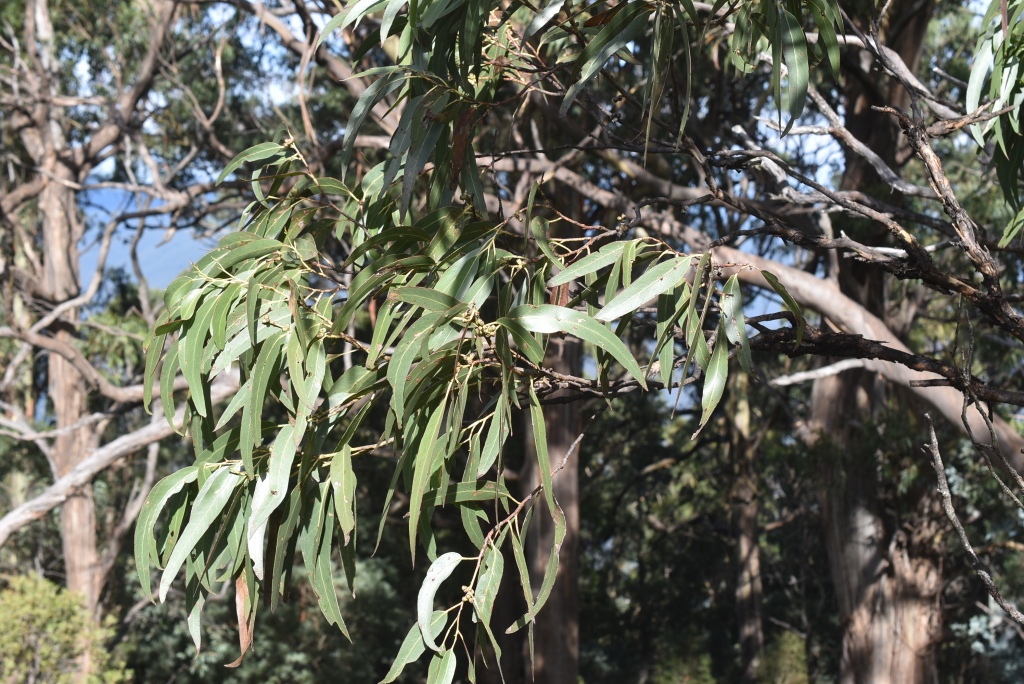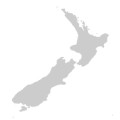Eucalyptus nitens
(H.Deane & Maiden) Maiden Shining GumTree to 70 m tall; bark smooth, grey or greenish, shedding in long strips. Juvenile leaves sessile, opposite for many nodes, elliptic to ovate, to 17 cm long, 8 cm wide, glaucous; adult leaves petiolate, alternate, lanceolate to narrowly lanceolate, margins entire, 13–24 cm long, 1.5–2.5 cm wide, concolorous, glossy, green; reticulation dense, broken, oil glands often obscure. Inflorescences axillary, unbranched; peduncles to 1 cm long, 7-flowered; buds sessile, cylindric to broadly fusiform, to 0.7 cm long, 0.3 cm diam., scar present; operculum conical; stamens inflexed; anthers dorsifixed, cuneate; ovules in 4 vertical rows; flowers white. Fruit sessile, cupular, to 0.7 cm long, 0.6 cm diam.; disc descending; valves 3 or 4, rim level; seed brown-black, ellipsoid, lacunose, shallowly reticulate, hilum ventral. Flowers Jan.–Mar.
VVP, Gold, EGL, EGU, HSF, HNF, Strz, HFE, VAlp. Also NSW. In Victoria occurring at high altitudes on the Great Dividing Range from the Blue Range, Mt Monda and Mt Torbreck east to Mt Selma and Mt Wellington, extending south to Mt Erica, but with an outlying easterly population at Mt Kaye.
The commercially valuable Shining Gum has recently been shown to consist of two species, viz. E. nitens as described above and the more restricted E. denticulata.
Brooker, M.I.H.; Slee, A.V. (1996). Eucalyptus. In: Walsh, N.G.; Entwisle, T.J., Flora of Victoria Vol. 3, Dicotyledons Winteraceae to Myrtaceae, pp. 946–1009. Inkata Press, Melbourne.
 Spinning
Spinning


